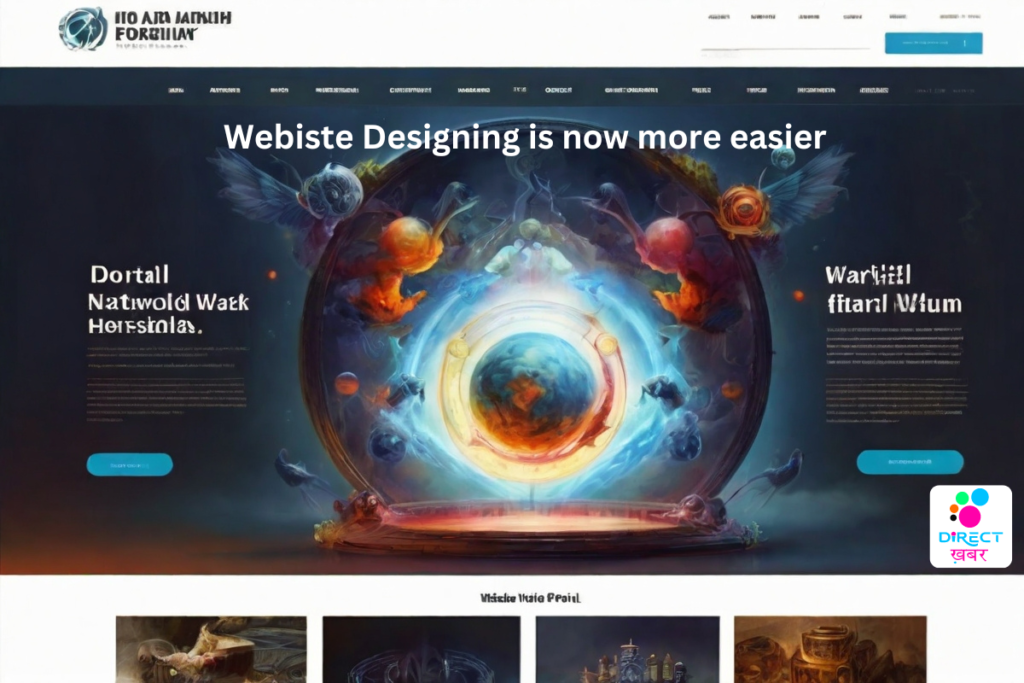In today’s digital age, establishing an online presence is not just a trend but a necessity. With the right approach, you can not only create a website but also turn it into a lucrative source of income. Let’s delve into the steps required to accomplish this.
1. Choosing the Right Platform
Selecting the appropriate platform lays the foundation for your website. Consider options like WordPress, Wix, or Squarespace, depending on your requirements. These platforms offer user-friendly interfaces and customizable templates, making website creation a breeze. WordPress, for instance, is renowned for its flexibility and vast plugin ecosystem, allowing you to extend the functionality of your website with ease.
2. Defining your Niche
First define your niche and Identify your target audience and carve out a niche for your website. Whether it’s fashion, technology, or fitness, having a specific focus enhances your website‘s appeal and attracts relevant traffic. Conduct thorough research to understand market demands and trends within your chosen niche. Utilize tools like Google Trends and keyword research to uncover popular topics and keywords that resonate with your audience.
3. Designing Your Website
Website design plays a crucial role in engaging visitors and retaining their interest. opt for a clean and intuitive layout, ensuring easy navigation. Incorporate eye-catching visuals and compelling content to captivate your audience. Remember, a well-designed website enhances user experience and encourages repeat visits. Consider factors like mobile responsiveness and page load speed to ensure optimal performance across devices and platforms.
By using following platforms, we can create website design:
- WordPress: WordPress is the most widely used CMS platform, powering around 40% of all websites on the internet. It offers a vast library of themes and plugins, making it highly customizable and suitable for various types of websites, from blogs to e-commerce stores.
- Wix: Wix is a beginner-friendly website builder that allows users to create visually stunning websites without any coding knowledge. It offers drag-and-drop functionality and a wide range of templates, making it easy to design professional-looking websites quickly.
- Squarespace: Squarespace is known for its sleek and modern designs, making it popular among creative professionals and small businesses. It offers customizable templates, built-in SEO tools, and e-commerce functionality, making it suitable for both portfolio websites and online stores.
- Shopify: Shopify is a leading e-commerce platform that allows users to create and manage online stores with ease. It offers customizable templates, secure payment options, and built-in marketing tools, making it an ideal choice for entrepreneurs looking to sell products online.
- Joomla: Joomla is a flexible and powerful CMS platform that is often used for complex websites and web applications. It offers a wide range of extensions and templates, allowing users to create highly customized websites tailored to their specific needs.
- Drupal: Drupal is another robust CMS platform known for its scalability and flexibility. It is often used for large and complex websites, such as government portals and enterprise-level applications. Drupal offers extensive customization options and a strong community of developers.

4. Content Creation
Content is king in the online realm. Produce high-quality, relevant content that resonates with your target audience. Utilize keywords strategically to optimize your website for search engines. Whether it’s blog posts, videos, or podcasts, focus on delivering value to your audience while showcasing your expertise in your chosen niche. Consistency is key – establish a content calendar and stick to a regular posting schedule to keep your audience engaged.
5. Monetization Strategies
Now, let’s talk about the aspect that interests many – earning money from your website. Explore various monetization avenues such as:
- Advertising: Incorporate display ads or sponsored content on your website. Platforms like Google AdSense offer a hassle-free way to start monetizing your traffic. Optimize ad placements and formats to maximize revenue without compromising user experience.
- Affiliate Marketing: Partner with brands relevant to your niche and promote their products or services. Earn commissions for every sale or referral generated through your website. Research affiliate programs in your niche and choose partners with reputable products and generous commission structures.
- E-commerce: Set up an online store and sell physical or digital products directly to your audience. Platforms like Shopify provide robust solutions for creating and managing your e-commerce venture. Invest in compelling product descriptions, high-quality images, and a seamless checkout process to drive conversions and boost sales.
- Membership Sites: Offer premium content or exclusive perks to subscribers in exchange for a membership fee. Create a sense of community and provide value to your members to ensure retention. Consider offering tiered membership levels with varying benefits to cater to different audience segments.
6. Driving Traffic
No matter how fantastic your website is, it won’t generate revenue without traffic. Implement effective SEO strategies to improve your website‘s visibility in search engine results. Conduct keyword research to identify relevant search terms and optimize your content accordingly. Leverage social media platforms, email marketing, and content promotion to drive targeted traffic to your website. Engage with your audience across multiple channels and encourage sharing to expand your reach organically.
7. Analyzing and Optimizing
Regularly monitor your website‘s performance using analytics tools like Google Analytics. Track metrics such as traffic sources, user engagement, and conversion rates. Identify areas for improvement and optimize your website accordingly to maximize its earning potential. Test different strategies, such as A/B testing landing pages or adjusting pricing models, to see what works best for your audience. Stay informed about industry trends and updates to stay ahead of the curve and maintain a competitive edge.
Creating a website and earning money from it requires dedication, patience, and strategic planning. By following these steps and continuously refining your approach, you can build a successful online venture that not only generates revenue but also provides value to your audience. Embrace creativity, stay informed about industry trends, and never stop innovating – the digital world is full of opportunities for those willing to seize them.






